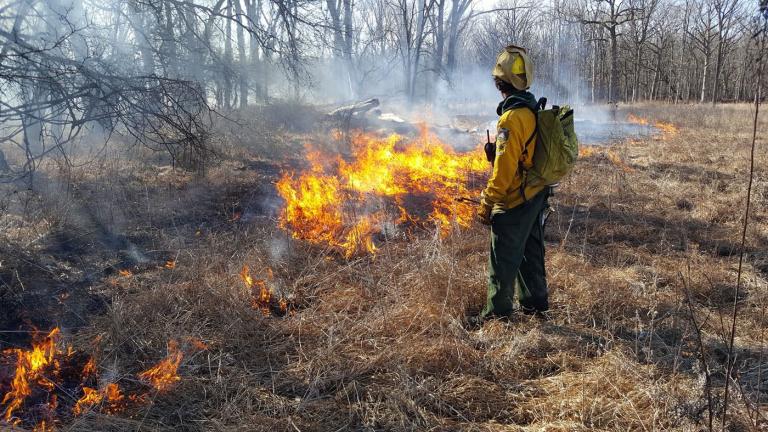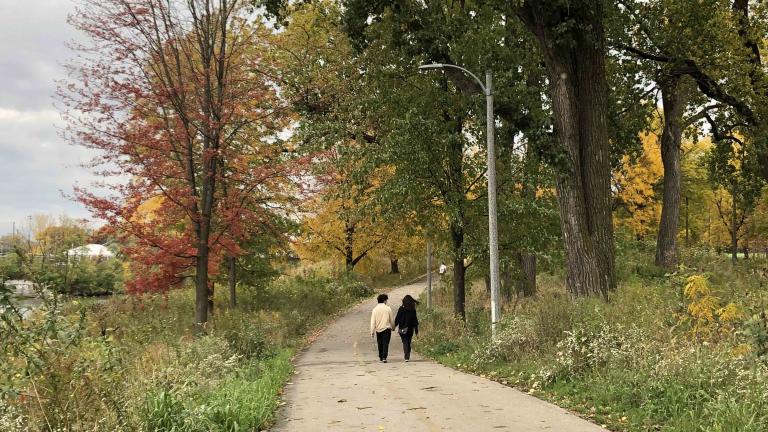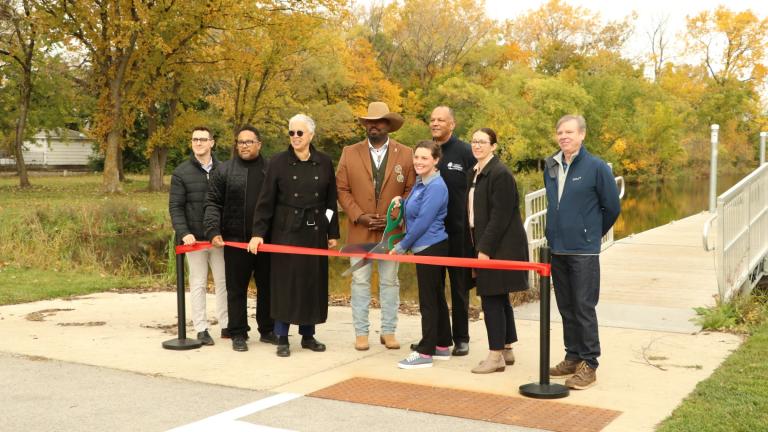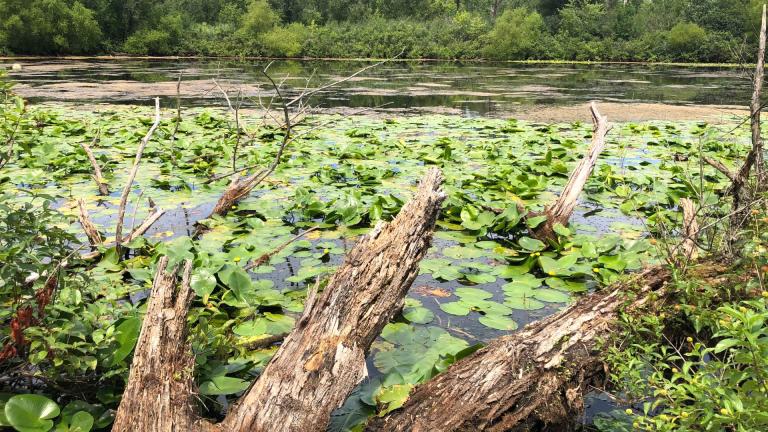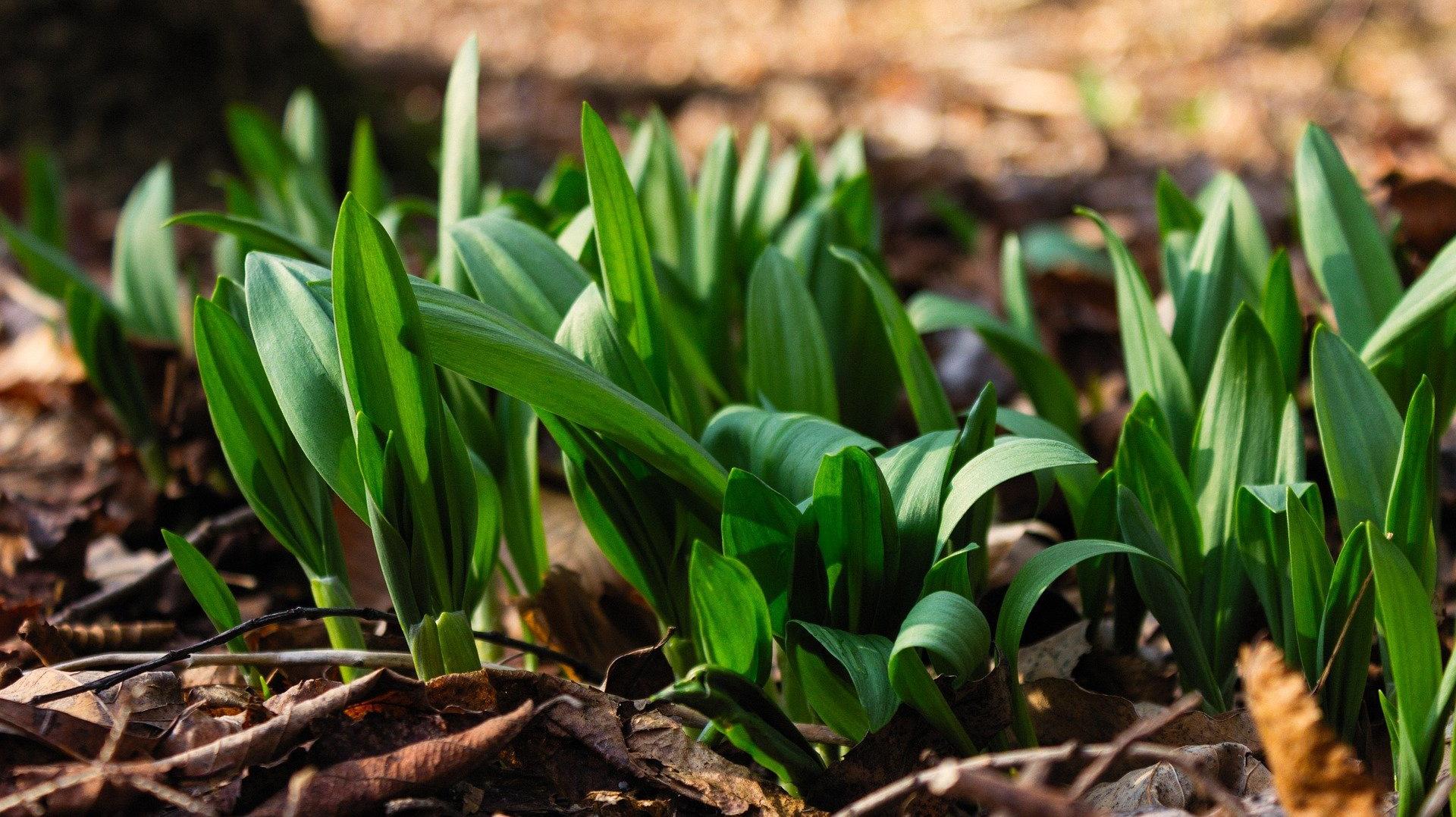 Legend has it that ramps, growing wild in forests, are the “stinky onion” that gave Chicago its name. (Moira Gibson / Pixabay)
Legend has it that ramps, growing wild in forests, are the “stinky onion” that gave Chicago its name. (Moira Gibson / Pixabay)
Legend has it that ramps are the “stinky onion” that gave Chicago its name.
The perennial wild leeks (Allium tricoccum) are most often described as a cross between garlic, onions and scallions. The plant begins to rear its pungent head in early spring in the region’s woodlands, where it thrives in dappled shade, moist soil and a blanket of decomposing leaves.
Because these growing conditions come more naturally to forests than industrial farms, ramps are a prime candidate for foraging.
And right now, they’re in season.
That’s great news for chefs, who eagerly await the annual appearance of this prized local delicacy, which can, among its many uses, be pickled, sautéed or blended into butters. But it creates a headache for forest preserve police, who dread the equally predictable appearance of poachers who routinely dig up the plants.
There’s a certain romance attached to the term foraging, which conjures up a primal sense of self-reliance and getting back to basics, of living off the organic, non-GMO bounty the land provides for free.
Here’s what it looks like from the perspective of the Cook County forest preserve police: theft.
“They’ll come out with buckets, grocery bags, garbage bags or even their purses full,” said Michael Parzygnat, an officer with the forest preserve force. “One of our officers caught someone with a shopping cart full of 30 pounds of plants. Often in their vehicles they’ll have even more.”
It’s illegal to forage in the forest preserves, be it for ramps, mushrooms, deer antlers or even a DIY bouquet of wildflowers, something the district makes clear through signage on premises as well as online and via social media channels.
“A majority of individuals do know it’s wrong,” Parzygnat said.
Though poachers, when busted, are rarely forthcoming regarding their intentions, Parzygnat said he was once told a haul of onions were for soup, which didn’t jibe with the massive amount of purloined plants.
“No one needs 3,000 onions for soup,” he said.
The more likely scenario is that the plants are being collected for sale to customers, who aren’t likely to know the source of the ramps.
“[The seller] will just say, ‘Wildly harvested,’” said Parzygnat.
On average, forest preserve police issue 100 citations each year for poaching, he said, estimating 25% to 50% involve the theft of ramps. Fines range from $75 to $500 depending on the number of plants swiped and whether the person is a repeat offender. If the poaching occurs on state-protected land (some state preserves are situated within county preserves), the thief could be charged with a Class A misdemeanor.
“They’ll fingerprint you for that,” Parzygnat said.
As for Cook County residents who say, “Hey, I pay taxes. The preserves are public land, ergo, I’m totally within my rights to pick a few (hundred) ramps,” preserve staff have a number of counterarguments.
On a philosophical level, the preserve’s mission is to protect lands for the enjoyment of all residents of Cook County.
“So if someone is collecting ramps or anything in the preserves, they’re really taking that for themselves,” said Becky Collins, senior resource ecologist for the forest preserves. “It’s what we term an exclusive use — it’s just for you — you have the benefit and you’ve deprived all of your fellow neighbors of that opportunity.”
Practically speaking, the forest preserve district’s 70,000 acres, approximately 50,000 of which are in a natural state, isn’t remotely enough land to feed the 5.2 million people who live in Cook County, should they all choose to treat it like a personal vegetable garden.
“We don’t have the scale to support any level of foraging or collecting,” Collins said.
And then there’s the ecological impact.
“You’re pulling up an entire plant and taking holes out of the ecosystem,” said Parzygnat. “Non-natives can fill that gap. Other plants and animals are impacted.”
Collateral damage can occur when people go tramping through the woods in search of ramps or mushrooms, crushing other plants underfoot.
“When we look at our state-protected areas, we have some rare and endangered plants. You could wipe out a plant that’s the last of its kind,” Parzygnat said. “How do you put a price on that?”
Though not endangered themselves, ramps are threatened by over-harvesting. The plant is slow growing and slow to reproduce, taking anywhere from 3 to 7 years between seed germination and harvest. Yanking a ramp bulb from the ground in spring, before it’s had a chance to flower and produce seeds, not only eliminates the existing plant but future ones as well, Collins said.
FORAGED-TO-TABLE
There are ways to sustainably forage for ramps on private land.
Award-winning chef Gale Gand and her son Gio Tramonto have been running a seasonal operation, Ramp It Up, for 16 years, supplying Chicago-area restaurants with ramps harvested around the family’s home in Riverwoods, where the plants grow wild in people’s yards, though not Gand’s.
“I’ve tried,” she said. “They might come up one year and not the next. Sometimes they take, sometimes they don’t. It’s not that they’re delicate, but they have to find the right soil.”
 Ramps' pink coloring distinguishes the wild leek from other members of the allium family. (Gio Tramonto's Ramp It Up / Facebook)
Ramps' pink coloring distinguishes the wild leek from other members of the allium family. (Gio Tramonto's Ramp It Up / Facebook)
The business started as a way for Gand to spend quality mother-son time with a then 8-year-old Tramonto, after she gave birth to her twin daughters.
“I said, ‘How about we forage ramps and sell them to Tru?’” recalled Gand, referring to the Michelin-starred restaurant she formerly owned with her ex-husband Rick Tramonto.
From that first customer, the business grew, slowly at first, to a list of 5 to 50 clients and then ballooned to hundreds, as the farm-to-table (or in this case foraged-to-table) movement took hold in Chicago. Additional family members and friends have since been recruited to pitch in during the short but intense season that’s over in a matter of weeks.
For Gand, it’s an opportunity to shed the role of chef and Food Network personality — “This one month of the year, I’m in boots like a farmer,” she said — and enter kitchens through the back door, making her delivery rounds.
“I bought the car from my mom that she used to deliver the ramps. That car, during ramp season, you would be smelling like onions all day,” Tramanto said.
Ramps are up in mid-to-late April through May, Tramonto said, with a window that he’s noticed has been shifting later and later in the spring. Though he has a ballpark idea of when the season will start, it doesn’t arrive like clockwork.
“We’re at the whim of nature,” he said.
Though Tramonto, now 24, recently relocated to the Cleveland area, the mini agri-business he and his mom founded owes much to the early days he spent drumming up not customers but suppliers.
From the get-go, Gand put Tramonto in charge of securing permission to legally forage for ramps by cold-calling on neighbors.
“You certainly learn how to knock on a door,” he said. His pitch was typically some version of: “We’re from down the street, you have these wild onions, they’re not weeds, can we come back and look at your property and we’ll pick some?”
It worked. “We haven’t had anyone shut the door on us,” Tramonto said.
Once, Gand even noticed new construction going up in the neighborhood and approached the property’s realtor about harvesting the site’s ramps before they were clear-cut to make way for landscaping.
“Gio and I were over there picking and the cops came by. ‘What are you doing?’ So we get asked,” she said.
In communications with customers, they always emphasize the ramps were picked from private land in an environmentally conscious way.
“It’s not the customers who dictate how much we pick, it’s from the supply side,” Tramonto said. “If we do our job unsustainably, the plant doesn’t survive, and we don’t survive.”
Ramps grow in clumps, and during harvesting the Ramp It Up team will almost surgically remove portions of a cluster rather than the entire grouping.
“Next year, each cluster that you took 10% from will fill in,” he said.
Of the properties they forage from, they might only work a handful in a given year, harvesting a small percentage of what’s available. A single 3-acre property could contain hundreds of pounds of ramps, more than Ramp It Up, or the homeowner, would ever need.
In its best years, Ramp It Up has sold 200-300 pounds, at $10-$15 per pound.
“Two thousand dollars is our entire season,” Tramonto said, which isn’t bad for a side hustle, but also explains why more farmers haven’t tried cultivating the crop.
“When we talk about farming, we talk in acres,” he said. “The demand (for ramps) isn’t there. You would be foregoing planting something else.”
During the coronavirus pandemic, Gand said orders surprisingly held steady in 2020 but then dropped dramatically in 2021.
“Last year, people were holding on. This is the year where I’ve lost everybody. I sent out emails, and I don’t think they exist,” she said.
Her concern isn’t so much for Ramp It Up but for the loss of momentum toward a local food chain.
“Food sourcing was getting interesting, there were a lot of small restaurants that supported farms,” said Gand. “But I think we’re going to have to wait a couple of years for people to resurface.”
Contact Patty Wetli: @pattywetli | (773) 509-5623 | [email protected]



